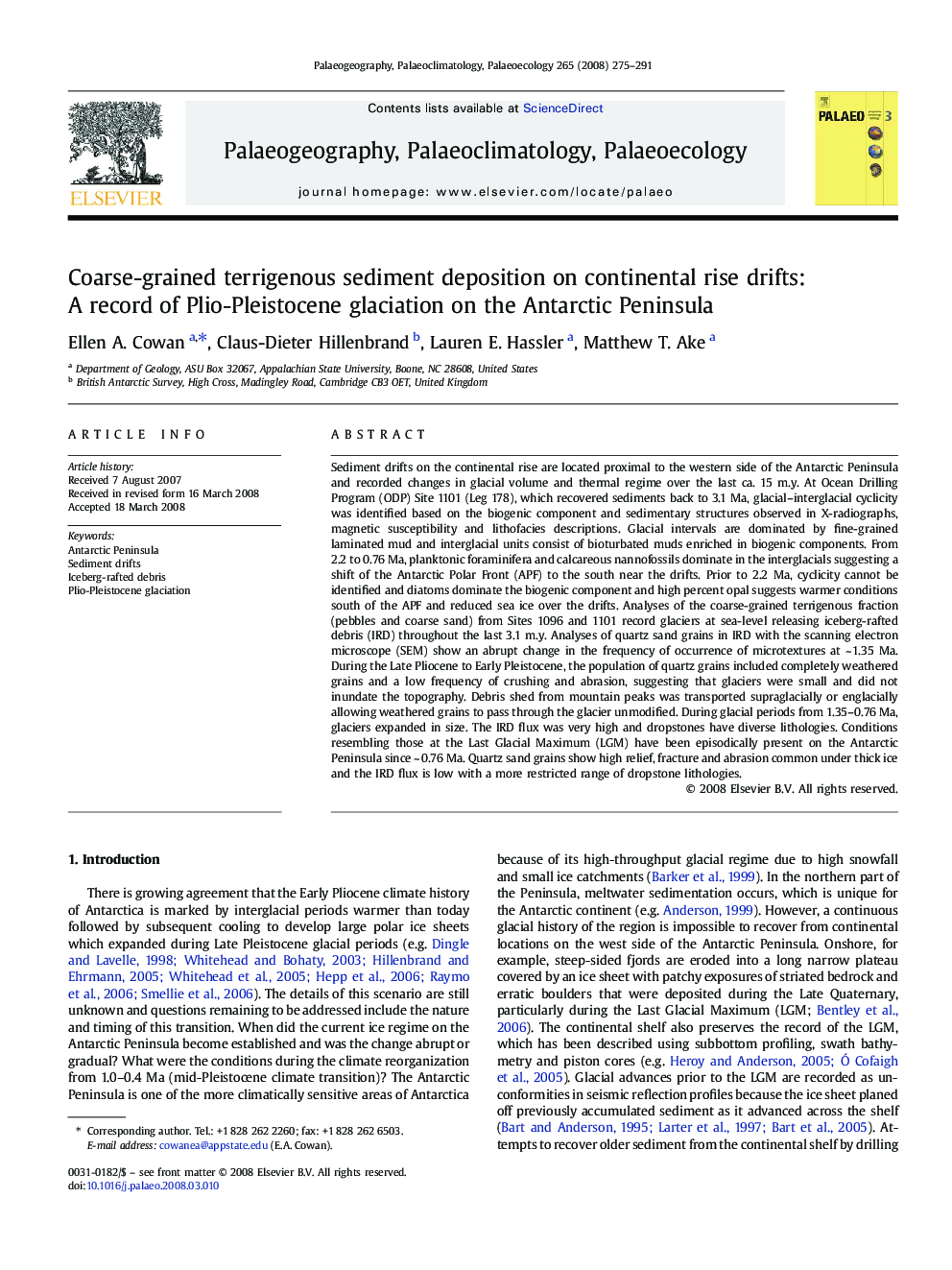| کد مقاله | کد نشریه | سال انتشار | مقاله انگلیسی | نسخه تمام متن |
|---|---|---|---|---|
| 4468486 | 1622323 | 2008 | 17 صفحه PDF | دانلود رایگان |

Sediment drifts on the continental rise are located proximal to the western side of the Antarctic Peninsula and recorded changes in glacial volume and thermal regime over the last ca. 15 m.y. At Ocean Drilling Program (ODP) Site 1101 (Leg 178), which recovered sediments back to 3.1 Ma, glacial–interglacial cyclicity was identified based on the biogenic component and sedimentary structures observed in X-radiographs, magnetic susceptibility and lithofacies descriptions. Glacial intervals are dominated by fine-grained laminated mud and interglacial units consist of bioturbated muds enriched in biogenic components. From 2.2 to 0.76 Ma, planktonic foraminifera and calcareous nannofossils dominate in the interglacials suggesting a shift of the Antarctic Polar Front (APF) to the south near the drifts. Prior to 2.2 Ma, cyclicity cannot be identified and diatoms dominate the biogenic component and high percent opal suggests warmer conditions south of the APF and reduced sea ice over the drifts. Analyses of the coarse-grained terrigenous fraction (pebbles and coarse sand) from Sites 1096 and 1101 record glaciers at sea-level releasing iceberg-rafted debris (IRD) throughout the last 3.1 m.y. Analyses of quartz sand grains in IRD with the scanning electron microscope (SEM) show an abrupt change in the frequency of occurrence of microtextures at ~ 1.35 Ma. During the Late Pliocene to Early Pleistocene, the population of quartz grains included completely weathered grains and a low frequency of crushing and abrasion, suggesting that glaciers were small and did not inundate the topography. Debris shed from mountain peaks was transported supraglacially or englacially allowing weathered grains to pass through the glacier unmodified. During glacial periods from 1.35–0.76 Ma, glaciers expanded in size. The IRD flux was very high and dropstones have diverse lithologies. Conditions resembling those at the Last Glacial Maximum (LGM) have been episodically present on the Antarctic Peninsula since ~ 0.76 Ma. Quartz sand grains show high relief, fracture and abrasion common under thick ice and the IRD flux is low with a more restricted range of dropstone lithologies.
Journal: Palaeogeography, Palaeoclimatology, Palaeoecology - Volume 265, Issues 3–4, 11 August 2008, Pages 275–291